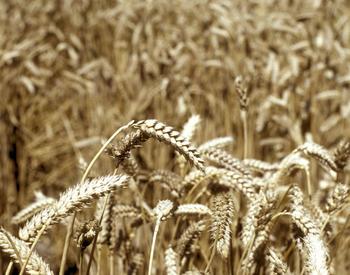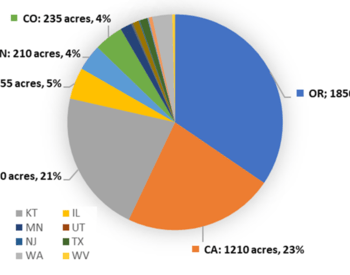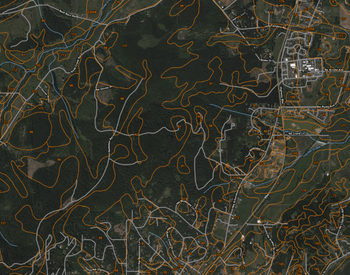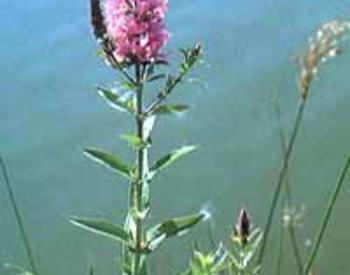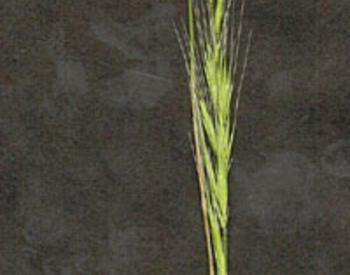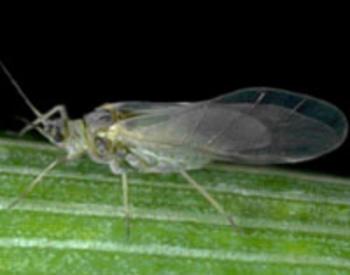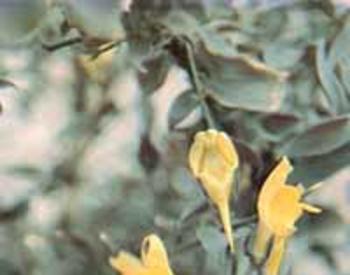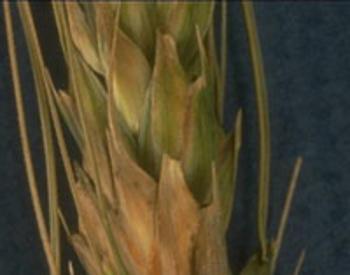Irrigation is commonly used to increase yield of many crops in the drier parts of Oregon and the western US. This article discusses irrigation recommendations for hemp grown for cannabinoid production (CBD type), but not hemp types bred for grain or fiber production.
For various personal and historical reasons, hemp growers have often grown hemp in widely-spaced plantings, usually irrigating with drip tape under plastic mulch. Such plantings have generally been in the range of 2000-4000 plants per acre. This very low density results in widely-separated plants that are tall, broad, and highly branched. Such arrangement has been nicknamed the “Christmas Tree” planting style because the hemp fields look very similar to Christmas tree plantations when viewed from the air. However, recent research and grower experience have shown that flower (and thus CBD) yields can increase when planted at higher densities. Results and recommendation in this article are based on CBD type hemp crop responses when grown without plastic mulch at densities of approximately 11,000 plants/acre for “full-season” (short day) varieties and 17,000 plants/acre for “autoflower” (day-neutral) varieties.
Because hemp can become a large plant with a “lush” appearance, it is often assumed it requires large inputs of irrigation water. Thus, a common question about growing hemp is, “What is the minimum and optimum irrigation required to grow my hemp crop?” Research at OSU has shown that in a semi-arid climate such as southern Oregon, hemp responds positively to irrigation, but is more drought-tolerant than might be guessed by its growth appearance. Hemp’s response to irrigation is also affected by factors such as plant spacing, irrigation method, and variety (especially comparing full-season vs autoflower types).
One important decision is whether to plant “full-season” or “autoflower” varieties. Full-season varieties typically use nearly the entire growing season to grow and mature (120-140 days). They are often 5-7 feet tall with up to a 5-foot diameter depending on plant spacing. In addition to the large primary mass of floral inflorescences at the top (commonly called the primary cola), these varieties produce many side branches with additional masses of floral inflorescences (secondary and tertiary colas). In contrast, autoflower varieties are only 2-3 feet tall with a 1-2-foot diameter. They go to flower and complete their growing cycle much quicker (70-90 days), and thus can be harvested by late July, avoiding the high water use demand days in August and September. However, the autoflower varieties tend to produce only a single large primary cola with much less side- branching and far fewer secondary colas. They also produce much less stem and leaf biomass compared to full-season varieties.
As irrigation increases over the range of nearly zero up to about 25-30 inches of total seasonal irrigation, full-season and autoflower hemp both produce steadily increasing amount of stem and leaf materials as well as secondary and tertiary colas. The proportion of total floral material in the primary cola is higher for autoflower than full-season types since autoflower varieties have fewer secondary (and often no tertiary) colas. The size of the primary cola remains essentially unchanged for both full-season and autoflower varieties regardless of irrigation amount, except under extremely dry conditions (if little or no supplemental irrigation is applied). At the extreme, we have grown full-season and autoflower varieties with no irrigation after crop emergence (and little rainfall) in southern Oregon. The plants are smaller than normal and obviously stressed, but typically they will produce a primary cola that is approximately 1/3 the size of the primary cola produced under full irrigation, along with some secondary cola biomass. As irrigation rate is increased, secondary and tertiary cola yields increase, but only up to about the point where irrigation rates reach the calculated Penman Potential Evapotranspiration rate (PEt). Thus, the total flower yield levels off and does not increase when irrigation exceeds the PEt rate. Because CBD concentration in the floral material does not vary much with irrigation rate, the total CBD yield per acre follows the same pattern as the flower biomass, reaching a plateau near the point where applied irrigation equals the PEt rate.
Hence, it is clear that for both full-season and autoflower varieties grown in a moderately dense plant spacing, hemp plants prioritize the production of the primary cola even under conditions of moderate to severe drought stress. Increasing irrigation will produce rapidly increasing amounts of leaf and stem material, and also will gradually increase production of secondary and tertiary colas up to the point where irrigation plus precipitation is about equal to the seasonal PEt.
Understanding the costs and availability of irrigation water, as well as knowing the market you’re growing for, are both key to irrigation decisions. If you plan to maximize the number of secondary and tertiary branch colas (in addition to the high-quality primary cola), then increasing irrigation during the season up to about the seasonal PEt will encourage more side-branching, resulting in more secondary cola production (and more tertiary colas in the case of full-season varieties). If irrigation water is more expensive, or quantity is limited for the full season, or is only available in the early part of the season, growers can still achieve a good yield by: 1) planting an autoflower variety to reduce the season length and thus total irrigation demand; or 2) apply less water during the season and expect a fairly normal primary cola, but somewhat reduced yield of secondary colas (and tertiary colas for full-season varieties). Other practices known to maximize water availability to a crop should also be followed in situations of limited irrigation availability. Factors such as site selection (soil type and depth, slope, and aspect), tillage and cover crop practices, and timing of direct-seeding or transplanting can all have a significant effect on the need for supplemental irrigation (Jones, 2022). If the cost or availability of irrigation is a primary concern, it may be that growing hemp on the traditional very widely spaced ”Christmas tree” arrangement under plastic mulch could allow you to use less total water simply due to reduced number of plants per acre, the large amount of mulched or non-irrigated bare ground between the plants, and the reduced soil surface evaporation due to the plastic mulch.
Other crop production factors are also affected by irrigation amount and method. For example, when plants are grown at high density in humid climates or are irrigated frequently using an overhead sprinkler system, there is increased potential for disease problems such as powdery mildew and gray mold that thrive in moist warm environments. Drip irrigation can help in these situations, but adjusting the plant spacing to allow some air movement could also slow transmission of some diseases.
Other practical considerations include things such as tractor and equipment width, restrictions based on tillage equipment or plastic mulch width, etc. The cost or hassle of adjusting these kinds of physical constraints may override plant growth characteristics when deciding on irrigation method and total system water use.
Note that the recommendations here only apply to hemp varieties grown for cannabinoid extraction (CBD types), especially under semi-arid conditions. Hemp varieties primarily bred for fiber and/or grain production may respond differently to irrigation due to their different growth pattern and plant morphology. Grain and fiber varieties are typically much taller plants, have more vegetative biomass, continue to grow through a longer season to complete the full reproductive cycle (through to the seed production stage), and are typically grown at much high plant populations (as high as 500,000 – 1 million plants per acre).
Typical examples of the effect of irrigation amount on the biomass yield per acre of primary, secondary, and tertiary colas as well as leaf and stem biomass and CBD yields for a full-season and autoflower hemp variety are shown below in Figure 1 and Figure 2. The calculated PEt for the autoflower example shown below was approximately 24 inches during the growing season, and PEt was approximately 30 inches for the full-season example shown below.
References:
Jones, Gordon B. 2022. Planning a drought-resilient hemp crop. Oregon State University Extension Service article. https://extension.oregonstate.edu/crop-production/field-crops/planning-drought-resilient-hemp-crop
